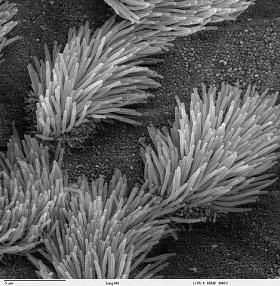Using AI to control energy for indoor agriculture
30 September 2024
Published online 26 January 2012

The genetic roots of disorders affecting how the antenna-like cilia of cells work remain only partially understood; with less than half of cases linked to genes. A new study published in Nature Genetics has identified mutations in the gene CEP41 as a cause of Joubert syndrome (JBTS), a rare disorder that affects the cerebellum, the part of the brain that controls balance and coordination.
The study also implicates changes in the protein tubulin – which forms the microtubules that, among other things, form the cytoskeleton of cilia — to the pathogenesis of human ciliary diseases.
The researchers mapped a genetic region in the human genome related to JBTS (JBTS15) and identified mutations in CEP41 in five members of a consanguineous family in Egypt affected by JBTS, as well as a second Egyptian family identified by Maha Zaki, a geneticist at the National Research Centre, Cairo. Fibroblasts, the cells that form connective tissue, were unable to produce the CEP41 protein in family members with JBTS.
In a zebrafish model, CEP41 was expressed in various ciliary organs implicated in JBTS. Human CEP41 engineered into the disease-causing mutations failed to rescue the zebrafish morphant phenotype, in which the gene encoding CEP41 was suppressed during embryonic development.
doi:10.1038/nmiddleeast.2012.10
Stay connected: